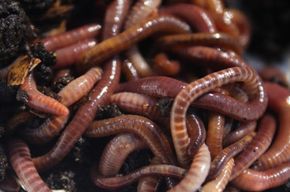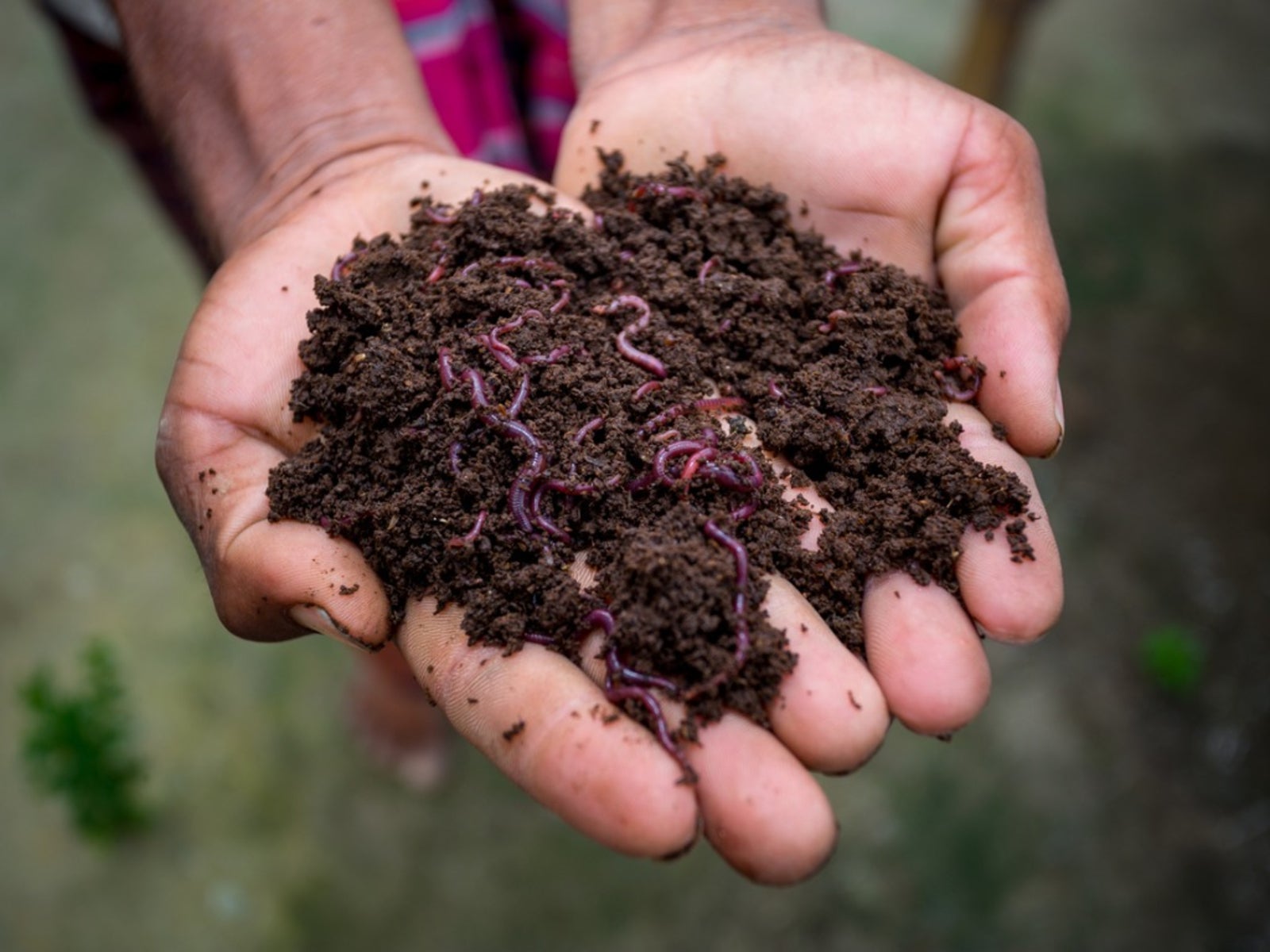The Ultimate Red Wiggler Composting Checklist for Successful Vermiculture
Wiki Article
Discovering the Systems of Red Wiggler Composting: A Comprehensive Overview to the Refine and Its Favorable Effect On Sustainable Horticulture Practices
The intricate systems of red wiggler composting, utilizing the special physiology of Eisenia fetida, present an engaging method for improving sustainable horticulture methods. As urban horticulture gains grip, understanding the nuances of this composting technique comes to be increasingly pertinent.Understanding Red Wigglers
Red wigglers, scientifically recognized as Eisenia fetida, are a types of earthworm extremely related to for their effectiveness in composting natural waste. These worms thrive in nutrient-rich settings, specifically in decaying natural issue, making them ideal for vermicomposting systems - Red Wiggler Composting. Identified by their reddish-brown coloration and fractional bodies, red wigglers are smaller than typical earthworms, normally gauging in between 3 to 4 inches in lengthTheir unique physical characteristics enhance their composting capabilities; for example, they have a high reproductive price, enabling populations to multiply quickly under appropriate problems. Red wigglers consume natural product, simplifying with their digestive systems, which leads to nutrient-rich spreadings that offer as a superb natural fertilizer. Their starved hunger allows them to process large volumes of food waste efficiently, considerably decreasing landfill payments.
Along with their composting prowess, red wigglers play an essential function in soil wellness. Red Wiggler Composting. They aerate the soil and help with the decomposition of raw material, further enriching the dirt ecosystem. Comprehending the features and environmental advantages of red wigglers is necessary for any person seeking to apply lasting horticulture practices via reliable composting approaches
The Composting Refine
The composting process entails breaking down natural materials into nutrient-rich compost, a job that red wigglers excel at because of their specialized digestive systems. These worms consume food scraps, yard waste, and various other natural matter, changing them right into valuable garden compost with a collection of chemical and organic procedures.Initially, the natural matter is combined with bed linen materials such as shredded paper or dried out leaves, producing an ideal atmosphere for the worms. As the red wigglers ingest this mixture, they break it down through their gut, where microbes even more break down the product. This process creates warmth, promoting microbial activity, which increases decay.

Benefits of Red Wiggler Composting
Eco-conscious individuals and several gardeners acknowledge the countless benefits of red wiggler composting, making it a popular selection for efficient waste administration. Among the main benefits is its capability to substantially minimize organic waste in land fills - Red Wiggler Composting. Red wigglers successfully damage down kitchen scraps and various other naturally degradable materials, changing them into nutrient-rich vermicompost that enhances soil healthMoreover, red wiggler composting improves soil framework and fertility. The resulting vermicompost is including useful microorganisms, which advertise plant growth and boost nutrient retention. This all-natural fertilizer not just supports sustainable horticulture methods but also decreases reliance on chemical fertilizers, cultivating a much healthier community.
In addition, red wiggler composting is a space-efficient approach, making it perfect for urban gardeners with limited space. The process can be conducted indoors or outdoors, permitting for year-round composting despite climate problems. Red wigglers are low-maintenance microorganisms that need very little care, making them accessible for newbie gardeners.
Basically, the benefits of red wiggler composting extend past waste reduction; they add to healthier soils, sustainable gardening techniques, and ecological stewardship, positioning it as a beneficial technique in modern cultivation.
Ideal Practices for Composting
For successful red wiggler composting, sticking to finest techniques is vital to maximize effectiveness and make sure an effective atmosphere for these worms. It is crucial to maintain an ideal carbon-to-nitrogen ratio, preferably around 30:1. This balance advertises ideal disintegration and improves the worms' wellness. Incorporate a mix of green products, such as vegetable scraps, and brown products like shredded paper or cardboard.
Following, display wetness degrees, aiming for a damp, sponge-like consistency. Overly wet problems can cause anaerobic decay, while extreme dry skin may prevent worm activity. Additionally, guarantee my review here correct oygenation by transforming the compost official site consistently, which assists protect against compaction and permits adequate oxygen circulation.
Temperature level is another vital element. Keep a variety of 55 ° F to 77 ° F(13 ° C to 25 ° C) to promote worm task and microbial growth. Lastly, avoid introducing meat, dairy products, and oily foods, as these can bring in pests and develop smells.
Enhancing Lasting Gardening
Sustainable gardening symbolizes an all natural approach that harmonizes ecological concepts with useful horticulture methods. By including techniques such as red wiggler composting, garden enthusiasts can dramatically enhance their methods, promoting an extra resilient ecological community. Red wigglers, renowned for their reliable decay abilities, convert natural waste into nutrient-rich garden compost, thus enriching the soil without depending on chemical fertilizers.Carrying out lasting gardening techniques, such as plant rotation, companion planting, and mulching, additional complements the advantages of composting. These techniques not just improve dirt framework and fertility but also advertise biodiversity, attracting helpful bugs and microorganisms that add to plant health and wellness. Utilizing native plants can minimize water intake and minimize upkeep, straightening with water preservation initiatives.

Conclusion
In verdict, red wiggler composting stands for a vital method for enhancing lasting horticulture practices. The efficient food digestion of organic waste by Eisenia fetida not only creates nutrient-rich vermicompost yet click here for more info also cultivates better soil health and structure. By promoting cardio decay, this method decreases smells and waste while decreasing dependence on chemical fertilizers. Ultimately, the adoption of red wiggler composting can significantly add to green gardening, profiting both urban and amateur gardeners in their cultivation efforts.The elaborate devices of red wiggler composting, utilizing the special physiology of Eisenia fetida, provide an engaging opportunity for boosting lasting horticulture practices. Understanding the characteristics and ecological benefits of red wigglers is necessary for any person looking to implement lasting horticulture techniques via effective composting techniques.

In conclusion, red wiggler composting represents an important method for enhancing sustainable horticulture techniques. Inevitably, the adoption of red wiggler composting can considerably add to environmentally friendly horticulture, profiting both city and newbie garden enthusiasts in their growing initiatives.
Report this wiki page